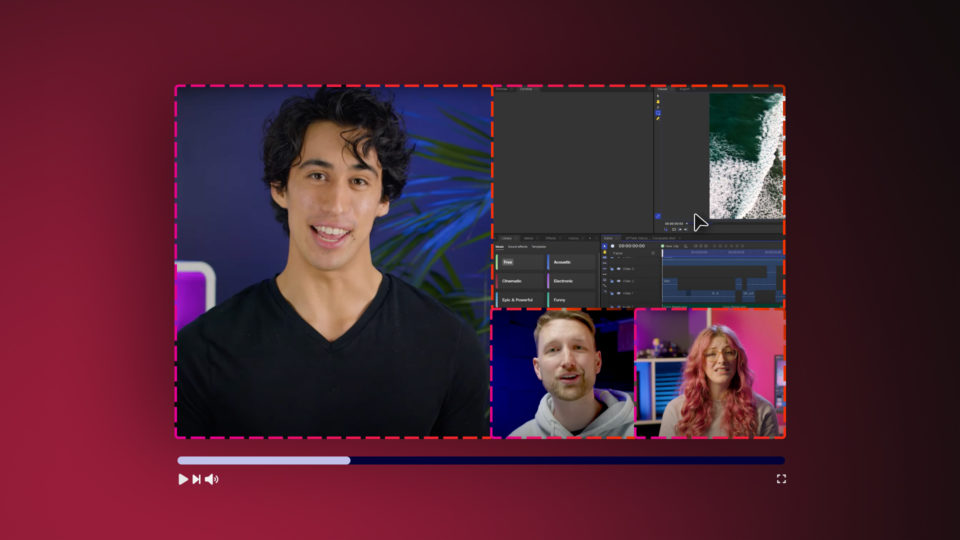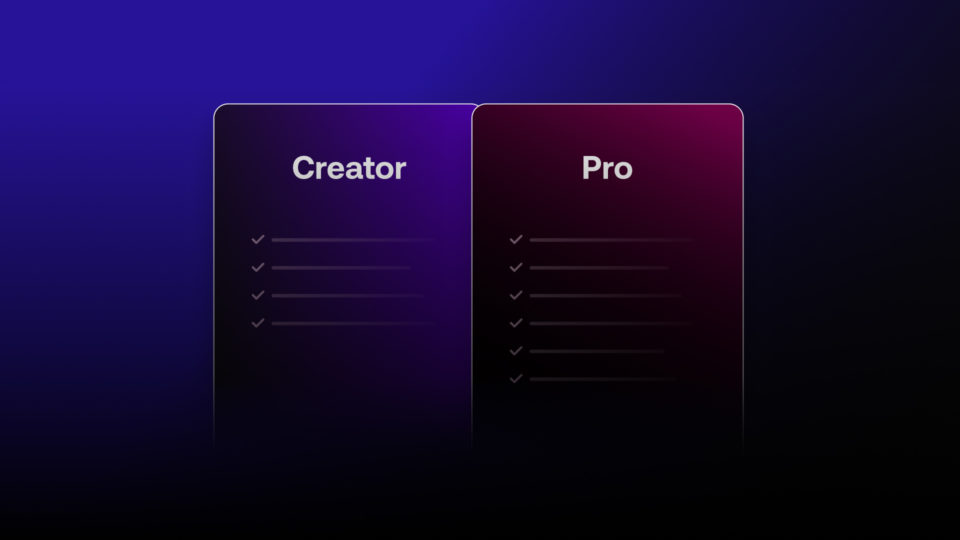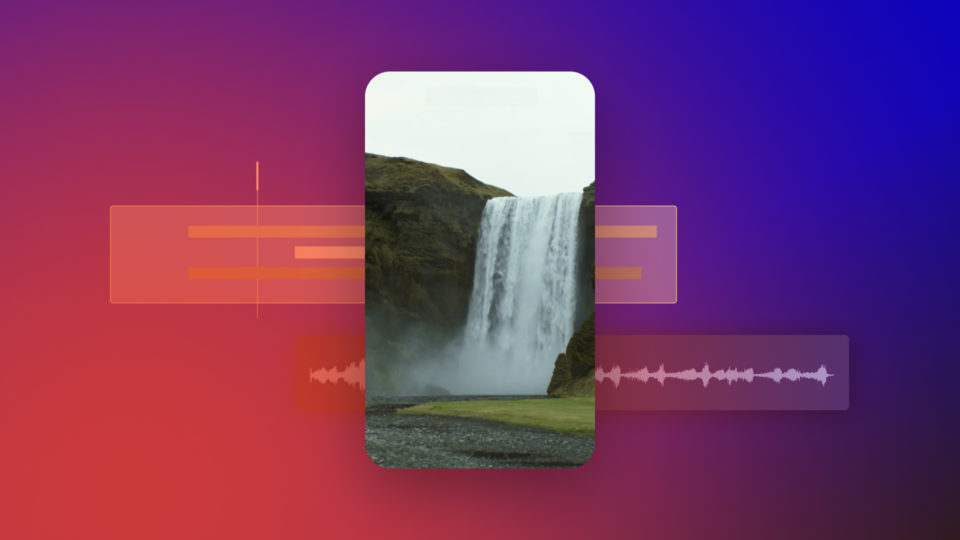Filming underwater is a scary prospect; a camera kit can cost a lot of money and doesn’t react well to getting wet. But, if you’ve ever wondered how filmmakers produce stunning under-the-sea shots, you’ve come to the right place. Today, we’ll explain how underwater videography works and what kit you need to get started.
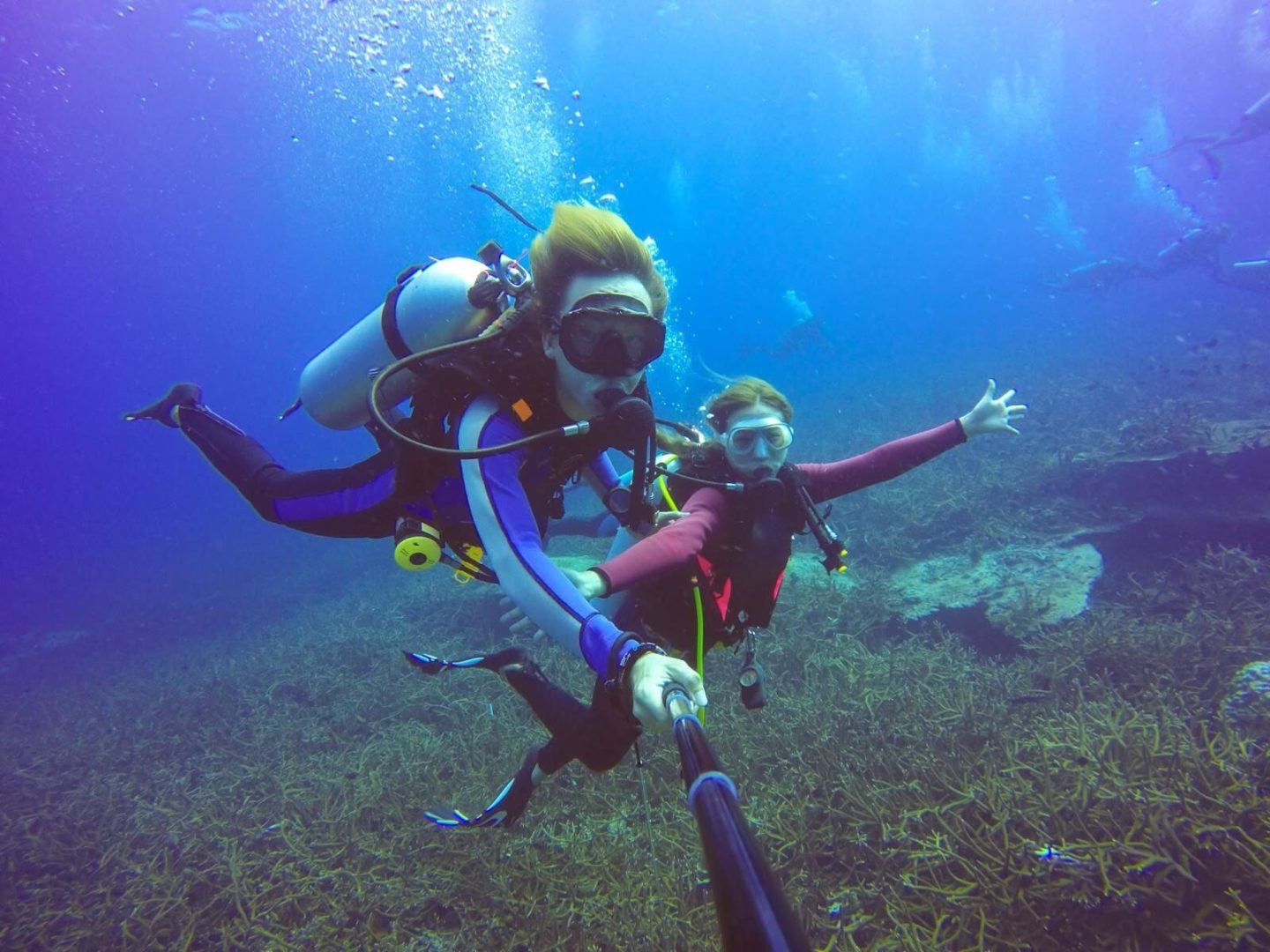
Equipment to use for underwater videography
Camera equipment is notoriously delicate and definitely something you shouldn’t get wet. Fortunately, there are plenty of kit options to help you achieve your deep-sea masterpiece.
Underwater cameras
Action cameras such as the GoPro Hero or DJI Action are designed for extreme environments and can deal with a lot more than other camera types. While the cameras themselves are not waterproof, action cameras often come with underwater housing.

If you’re a surfer or scuba diver and want to film your activities, action cameras are a fantastic shoot-and-go option. However, they can be limiting for filmmakers that want more control over their shots.
Soft Case
Soft cases come in various shapes and sizes, from DSLR cameras to your smartphone. A soft case is essentially a waterproof bag that holds your camera with a rigid window to point the lens through.
Soft cases are cost-effective and can be used across camera types allowing you to use the same housing with various cameras. On the downside, they can be quite tricky to use; the clunky design makes them difficult to control, especially if you’re weighed down with a scuba kit.
Hard Case
Hard cases are probably the most secure, but they do come at a cost. Not only are hard cases expensive compared to the soft case options, but they are also created for a specific camera, meaning you’ll need a whole new case if you want to change your device.
Since hard cases are created for specific cameras, they are super easy to use and have been made to ensure the buttons and settings on your camera are accessible.

Outex
Outex is a brand of underwater housing that mixes the cost-effectiveness and flexibility of the soft case style with the security and ease of use of hard cases. The Outex models offer a thin molded case that hugs the camera body with a high-quality glass lens or bubble cap for depth of focus. The light, durable and easy-to-use design is available for large and small DSLRs as well as smartphones.
How to check your camera is safe for underwater videography
No matter what case you are using, throwing your camera into some water is a scary thing to do. However, you can do a couple of things to ensure that your camera is safe in your underwater housing before you get to filming.
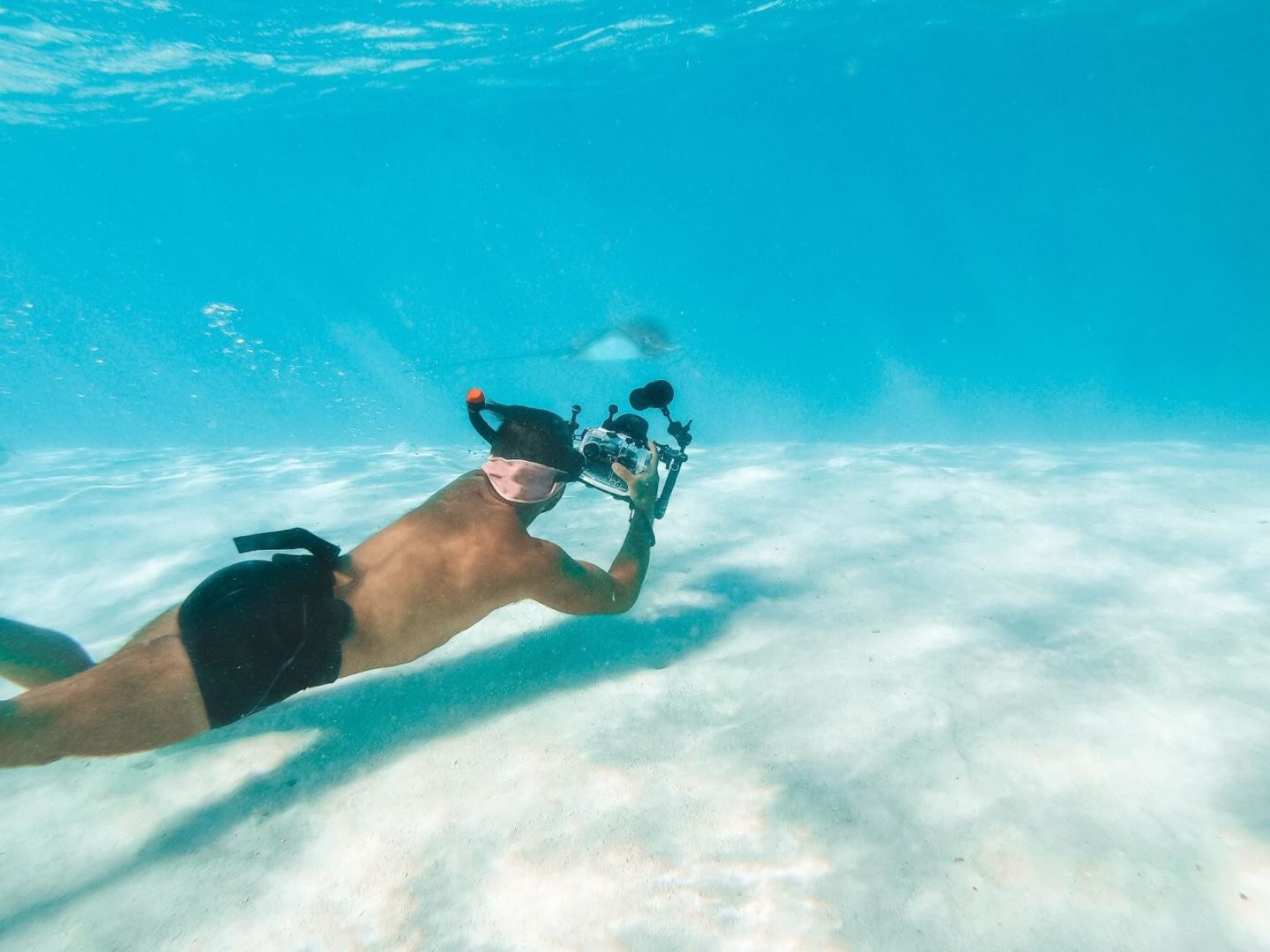
Understand your underwater camera housing
If you’ve never used underwater camera housing before, the first thing to do is to read the manual. Understand how the equipment works, how to troubleshoot the setup, and how to clean and maintain your kit. It can be helpful to set up the casing and test it in water without the camera, just to check you’ve put it together properly.
Look for bubbles
Once you’ve set up your housing with the camera, you should conduct another test before you hit record. Slowly submerge the kit in still, clear water and check for bubbles. Once the camera is underwater, there will always be a few bubbles rising to the surface, but you need to look for a continuous stream of small bubbles.
The technique is similar to checking for punctures in a bike tire. The good news is that the bubbles act as a warning sign, giving you a minute to get your camera out of the water before too much damage is done.
Clean immediately after use
It is most likely that you’ll be filming your underwater shots in either seawater or pool water. Both the salt and Chlorine in the water you’re filming in can cause wear and damage to your waterproof housing. Therefore, cleaning your case as soon as you are finished is vital to remove harmful elements.
Top tips for shooting underwater
Shooting underwater is challenging and completely different from regular, on-land filming. While the camera will work exactly the same way above and below the water, there are several things to think about.

Learn to dive – be safe
While it is important that your kit remains safe, it is even more critical that your cast and crew are. Working around the water is dangerous, and you should plan for exer possibilities. Learning to dive is a great way of ensuring you’re doing everything possible to run a safe filming environment. Make sure you risk assess your shoots and plan for every eventually. Pay close attention to the weather and Tidal warnings, and never go off alone.
Stay in shallow areas
Staying in the shallow areas is not only a fantasy safety tip; you can actually get better footage by doing so. Many of the interesting elements of shooting underwater are in the shallow areas; coral, fish, seabed, etc. Not only is the content more interesting, but there is also more available light, giving you a better-looking shot.
Remember to white balance
The underwater world is completely different from above the Water, and your camera’s white balance might be a little confused. While it is important to adjust your White Balance settings, you can also choose color profiles that suit the underwater shots.
Interesting Techniques to Consider when Filming Underwater

Breathing
It is perfectly natural to take a massive breath before diving into a pool, but when you fill your lungs with air, it will make you float. If you’re filming at sea, a scuba kit is a fantastic way of managing your buoyancy and extending the time you’re underwater. If you’re in a pool, it can be difficult to stay underwater longer. Remember, without a breathing kit, you’ll have just seconds to get your shot.
Interesting Camera Movements
Moving in water is entirely different from moving on land, and you should use this to your advantage. The water acts a bit like a Steadycam, giving you far less camera shake as you move around. Try swimming around with your camera, spinning, and turning in the water to create cool camera movements.
Follow the Action
Following the action is especially important when filming creatures under the sea. Consider what your audience wants to see and move the camera with the subject of your shot. Try and position yourself ahead of the action so the fish swim into the frame rather than out of it.
Tips for Editing your Underwater Video like a Pro (in Hitfilm)
Once you’ve shot your underwater clips, you’ll need to edit them. Fortunately, there is very little difference in the editing process, so let’s look at a few tips to get you started.
Stabilize your shaky clips
While you should aim to get your footage as shake-free as possible, there will always be a little movement, especially when filming handheld shots. Using stabilization effects can greatly improve your clips.
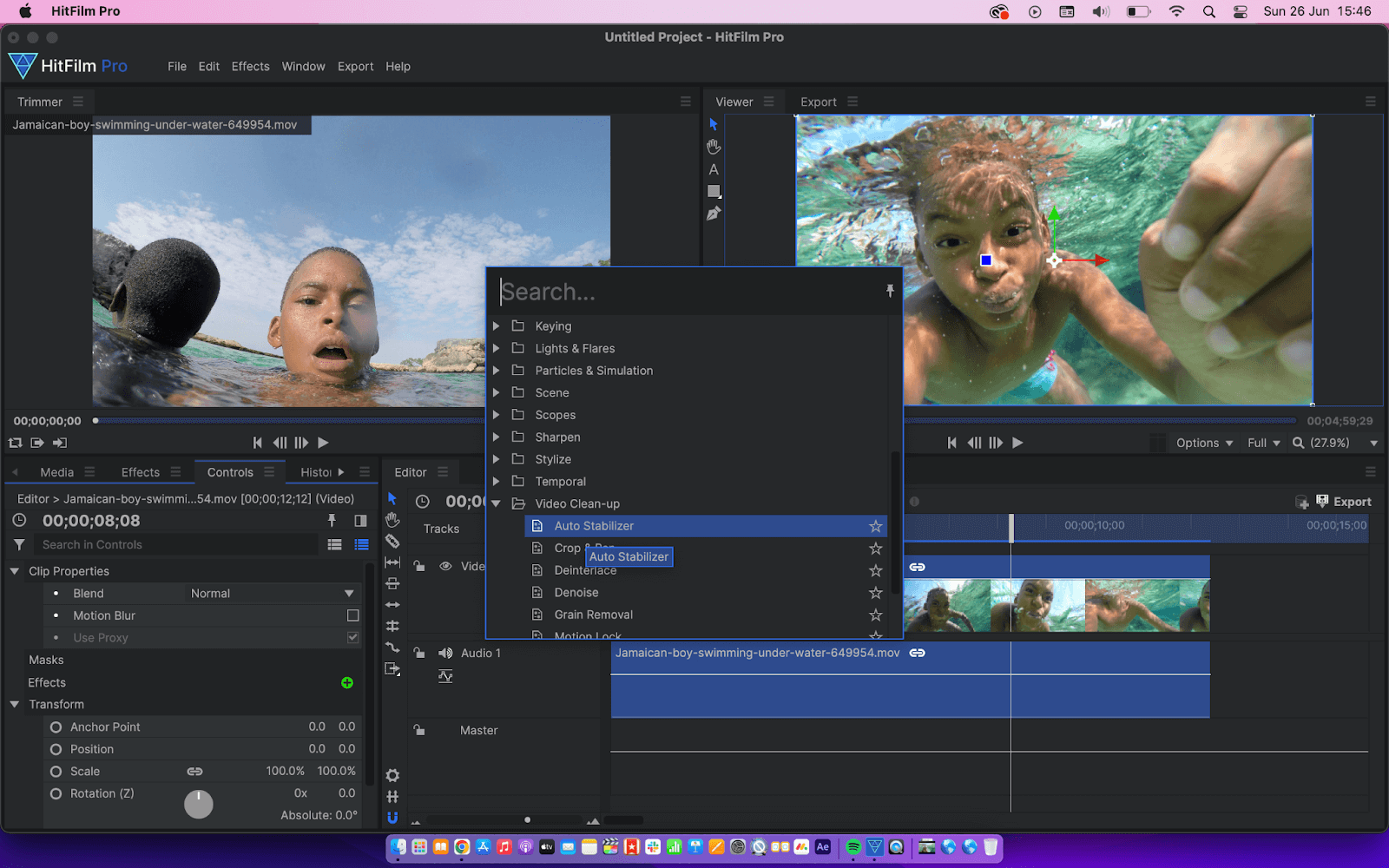
Color Grade your Footage
Grading your footage is a must for any video, but underwater shots can allow you to have fun and experiment. In addition, the water will likely give all of your clips a green/blue look, which can be emphasized with grading to produce stunning, other-worldly visuals.

Use Light Leak and Flare Effects
You’ve probably seen underwater shots with beautiful light effects created by the sun shining from above. You can make this effect using light leak overlays and flare effects, even if you shoot on a cloudy day. Remember, when adding light effects, follow the direction of the light source in your shot.
It is an understatement to say that underwater videography is challenging; along with all the regular filming challenges, you have to consider a dangerous environment, moving underwater, keeping your kit safe, and staying alive. If you don’t think underwater filming is for you, you can find hundreds of fantastic underwater stock clips for your projects. If you do decide to jump in, make sure you’re prepared and stay safe.

